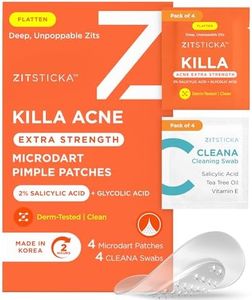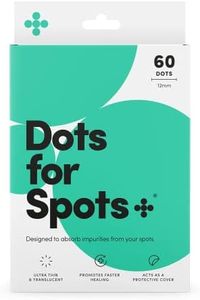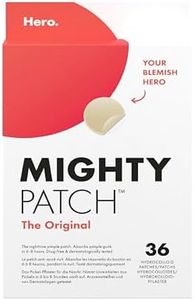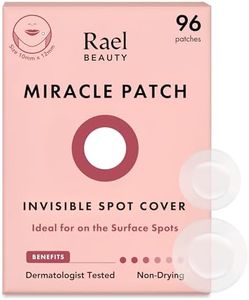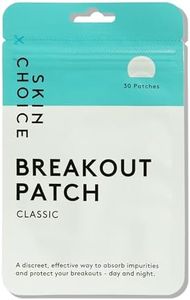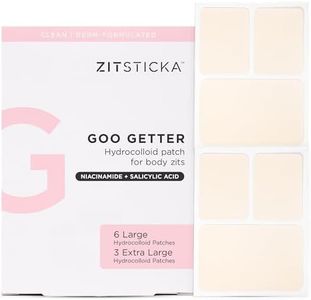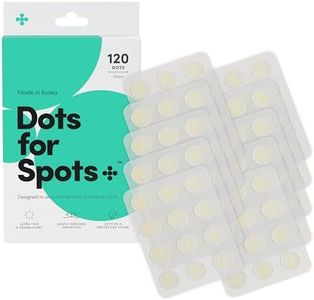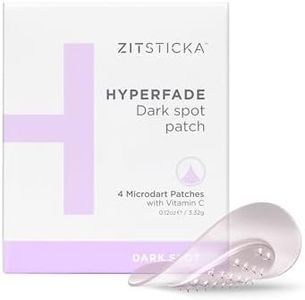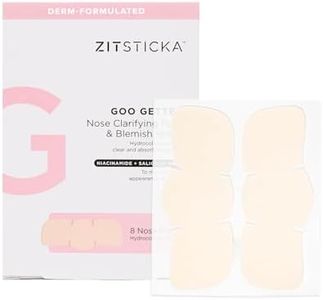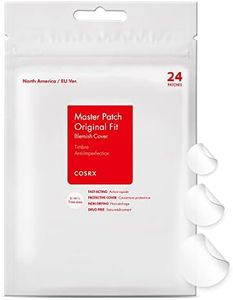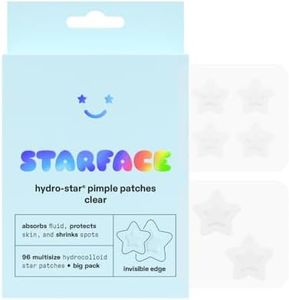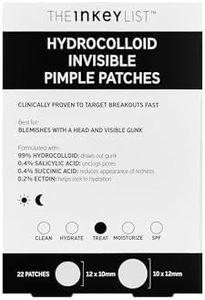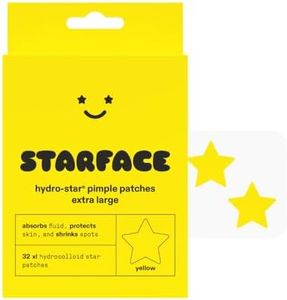We Use CookiesWe use cookies to enhance the security, performance,
functionality and for analytical and promotional activities. By continuing to browse this site you
are agreeing to our privacy policy
10 Best Pimple Patch
From leading brands and best sellers available on the web.Buying Guide for the Best Pimple Patch
Pimple patches are a popular skincare product designed to help treat and heal acne. They work by covering the pimple, protecting it from bacteria and dirt, and often contain ingredients that help reduce inflammation and speed up the healing process. When choosing a pimple patch, it's important to consider several key specifications to ensure you select the best one for your skin type and needs.IngredientsIngredients in pimple patches are crucial as they determine the patch's effectiveness. Common ingredients include hydrocolloid, salicylic acid, and tea tree oil. Hydrocolloid patches are great for absorbing pus and reducing inflammation, making them ideal for whiteheads. Salicylic acid helps to exfoliate the skin and unclog pores, suitable for those with frequent breakouts. Tea tree oil has antibacterial properties, which can be beneficial for inflamed pimples. Choose a patch with ingredients that match your skin's needs and sensitivities.
Size and ShapeThe size and shape of pimple patches can vary, and it's important to choose one that fits the size of your pimple. Smaller patches are ideal for targeting individual pimples, while larger patches can cover multiple spots or larger areas of breakout. Some patches come in fun shapes, which can make the treatment process more enjoyable. Consider the size of your pimples and the area you need to cover when selecting a patch.
AdhesivenessAdhesiveness refers to how well the patch sticks to your skin. A good pimple patch should stay in place throughout the day or night, even if you have oily skin or are active. Patches with strong adhesiveness ensure that the active ingredients stay in contact with the pimple, providing continuous treatment. If you have sensitive skin, look for patches that are gentle yet still adhere well.
TransparencyTransparency is important if you plan to wear the pimple patch during the day or under makeup. Transparent patches are less noticeable and can be worn discreetly. If you prefer to use patches only at night, transparency may be less of a concern. Choose a patch based on when and where you plan to use it.
BreathabilityBreathability refers to how well the patch allows your skin to breathe. Patches that are too occlusive can trap moisture and bacteria, potentially worsening the pimple. Look for patches that are breathable yet still provide a protective barrier. This is especially important if you have sensitive or acne-prone skin.
Ease of RemovalEase of removal is important to avoid irritating your skin when taking off the patch. Patches that are difficult to remove can cause redness or even damage the skin. Look for patches that peel off easily without leaving residue. If you have sensitive skin, this is particularly important to prevent further irritation.
